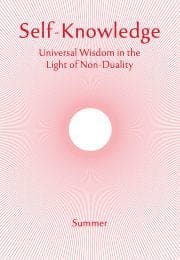The Aitareya Upanishad
The Upanishads contain statements that contradict the duality of everyday experience and indicate, as a higher truth, the state of non-duality. This applies to the apparent differences at all levels: differences of qualities which distinguish one thing from another; differences of metaphysical value or status, as between the divine and the human; divisions in the operations of our thinking, as between subject and object. To one whose knowledge is free from all trace of error or nescience, ‘there is no duality whatsoever’.
This realisation of universal unity and our oneness with that unity, is not the only form of teaching found in the Upanishads. There are also instructions in moral guidance or ‘dharma’ which, being practised, serve to prepare our mind for the final breakthrough in understanding. There are also references to the rituals and symbolic meditations which were to be performed as part of the Vedic religion of the day. Yet, in the Upanishads, there is always a hint, or specific call, to the effect that ceremony and ritualism must be outgrown in favour of the quest for direct experience of Reality.
The Aitareya Upanishad does not provide us with details of this quest. In fact, most of its content is concerned with an account of the creation and development of the universe, similar but more elaborate, to that found in other Upanishads. And yet the Aitareya Upanishad also includes one of the Maha-vakyas, the ‘great sayings’, in which the highest teachings are distilled and communicated in the most direct possible way. And so this is considered one of the principal Upanishads, on which Shri Shankara wrote a detailed commentary showing how the preliminary teachings are superceded and culminate in the supreme truth of universal non-duality.
The Upanishad is in three parts, which present, respectively: the stage of being immersed in the phenomenal world; a recognition of one Reality underlying all phenomena; the realisation of the supreme Being as Self.
The first verse declares:
In the beginning this was but the absolute Self alone. There was nothing else whatsoever that blinked. He thought: ‘Let Me create the worlds.’
‘In the beginning’ has two meanings. It refers to what we understand as logically ‘prior to’ space-time, the transcendent Being unchanged by any change, apart from which there is no other. Thus the ultimate Truth is affirmed in the opening words. And this is also the beginning of the account of the origin of the known universe: the ordered appearance of the elements; the emergence of the natural world and its living beings; the provision of nourishment; the pre-eminence of humankind; and the crucial role of prana—the life-force—as the servant of the Absolute.
He created these worlds... He thought, let me create a guardian shepherd for this world… He formed the first Person... He brooded on the Person and separated the eyes and the ears and sight and hearing emerged... (Part one, chapter one)
These powers fell into the Ocean [of being and becoming]... they felt hunger and thirst… they needed a form in which to take food… cows and horses were offered but these were insufficient… there came a [human] person… this was good… the powers entered him… hunger and thirst were always present… (Part one, chapter two)
So far this account evokes the divine origin and essence of conscious experience, and also the tinge of need and want that pervades the world.
The creator produced food… food resisted… He tried to grasp food with speech and mind and the rest… these failed… otherwise it would be enough merely to speak or think of food!.. He shaped food with life-force… it is life-force that takes food. (1:3:1-10)
Natural science describes how life depends on the ability of organisms to overcome entropy and sustain themselves by absorbing and transforming nutrients from the environment. With deep insight and a touch of shrewd humour, the Aitareya Upanishad highlights the same essential challenge to be overcome in the development of life-forms.
But the main purpose of these ‘process of creation’ teachings is not to present a historically true sequence of primeval events; it is to affirm the ultimate fact of a deeper reality alone abiding ‘in the beginning’, and which remains eternally the inner ruler and the only substantial reality. The intention is not to show how a real material, under divine supervision, is fashioned into a real world. The whole process is known to be a play of phenomena, which misleads only those who have not yet recognised the phenomenal nature of the world and believe it to be absolutely real.
Amidst the experience of apparently divine powers and also of want, a new degree of self-awareness arises.
Subscribe or enrol for free guest access to read all of this article and Self-Knowledge online.
Already subscribed or enrolled? Log in:


